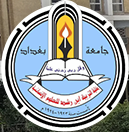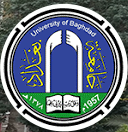Abstract
The most important element of reading a text that drives the process of reading is "unlimited freedom". It is the element that the leaders of the reception theory have focused on, in constructing the meanings with the basis of diversity and difference. It is the diversity itself which carries the reader to give his response in an interactive framework between the writer and recipient. Translating from this perspective is a deconstruction and construction. To understand a text, we deconstruct and then build it again to formulate it in another artistic form because the translation is a communicative practice in the first place of its strong affiliation to the cultural context.
There are two important types of translation; literal/ direct translation and interpretive translation. Interpretive translation motivates a sense of enjoyment with the reader, whereas the literal translation is a faithful process even if it has surprised the reader. Perhaps it is the translation of interpretation that generates pluralism, and it is a type of reading that calls for openness and multiple sense of meanings. From this perspective, interpretation is responsible for pluralism and difference in the first place, where there is no absolute original meaning, since the translation itself is the "difference" which opens the appearance of semantic meanings.
Based on the theory of “originality of difference”, our study seeks to find effective strategies and methods of translating the titles of Arabic narratives into Persian, in the light of the literal and interpretive translation strategies. We have seen through the selected models, like other titles, that interpretive translation is not looking for lexical reward, but with something is called "rhetorical reward". We do not translate the language, rather we translate the discourse. In accordance with the principle of difference, we have noted that the translation was followed by the reception elements, which the translator could not control. We also noted that translation should permit for cultural diversity.
Article Type
Article
First Page
166
Last Page
183
Publication Date
3-15-2024
Creative Commons License

This work is licensed under a Creative Commons Attribution 4.0 International License.
Recommended Citation
Araji, Fatima
(2024)
"The act of translating between Literal translation and interpretive translation reading of the Persian translation of the titles of Arabic novels,"
Alustath Journal for Human and Social Sciences: Vol. 63:
Iss.
1, Article 16.
DOI: 10.36473/e8e63j62
Available at:
https://alustath.researchcommons.org/journal/vol63/iss1/16










